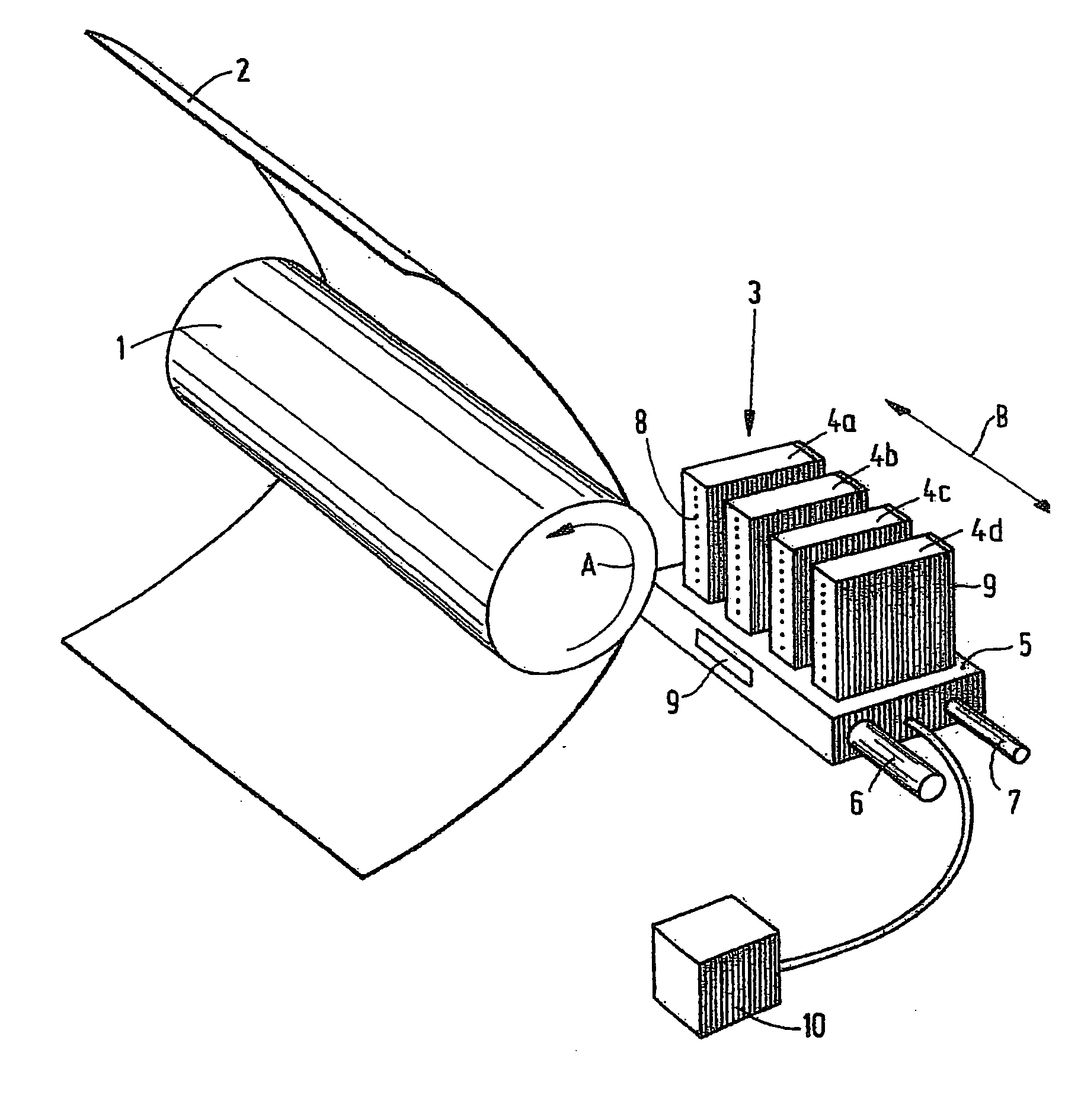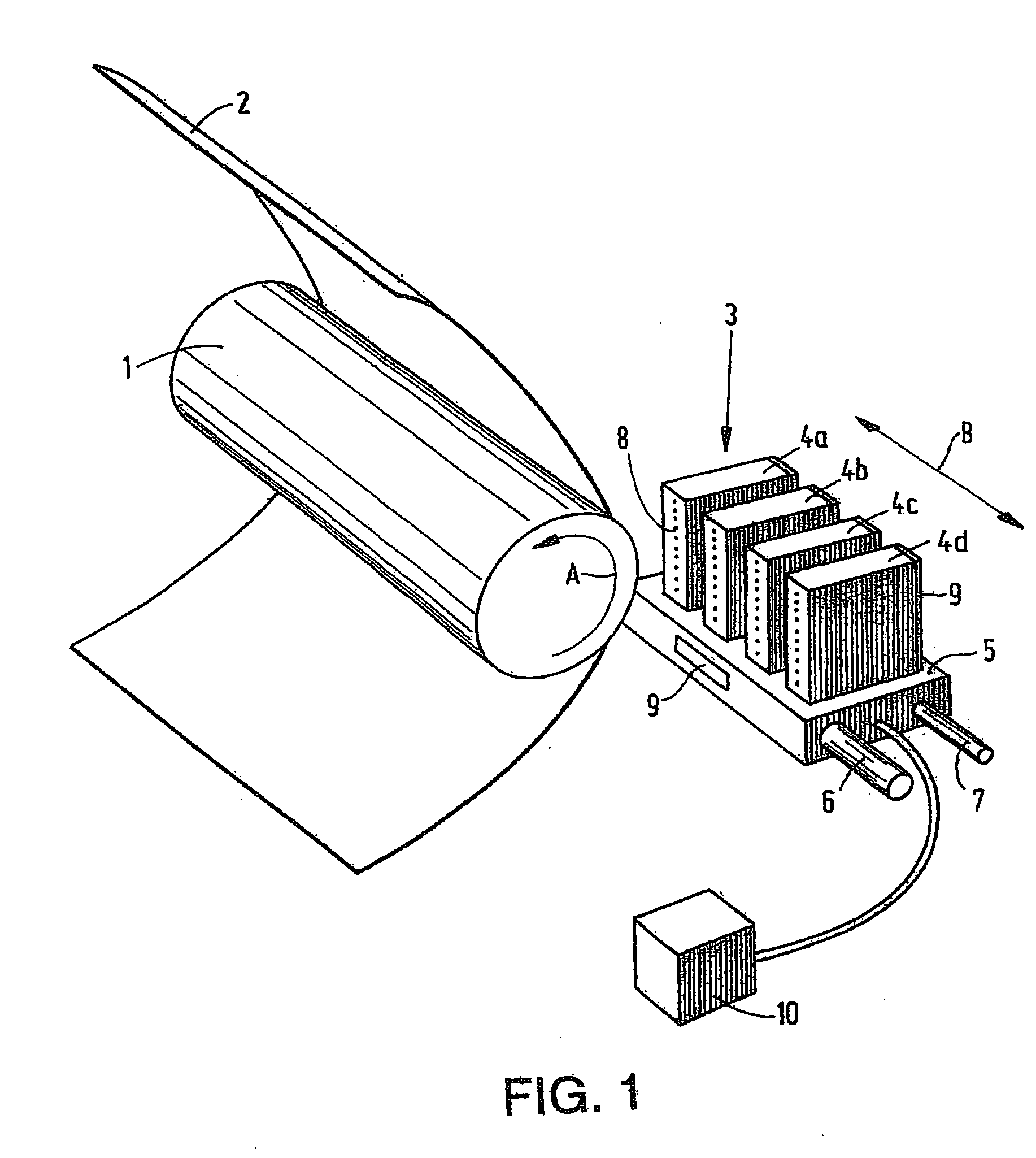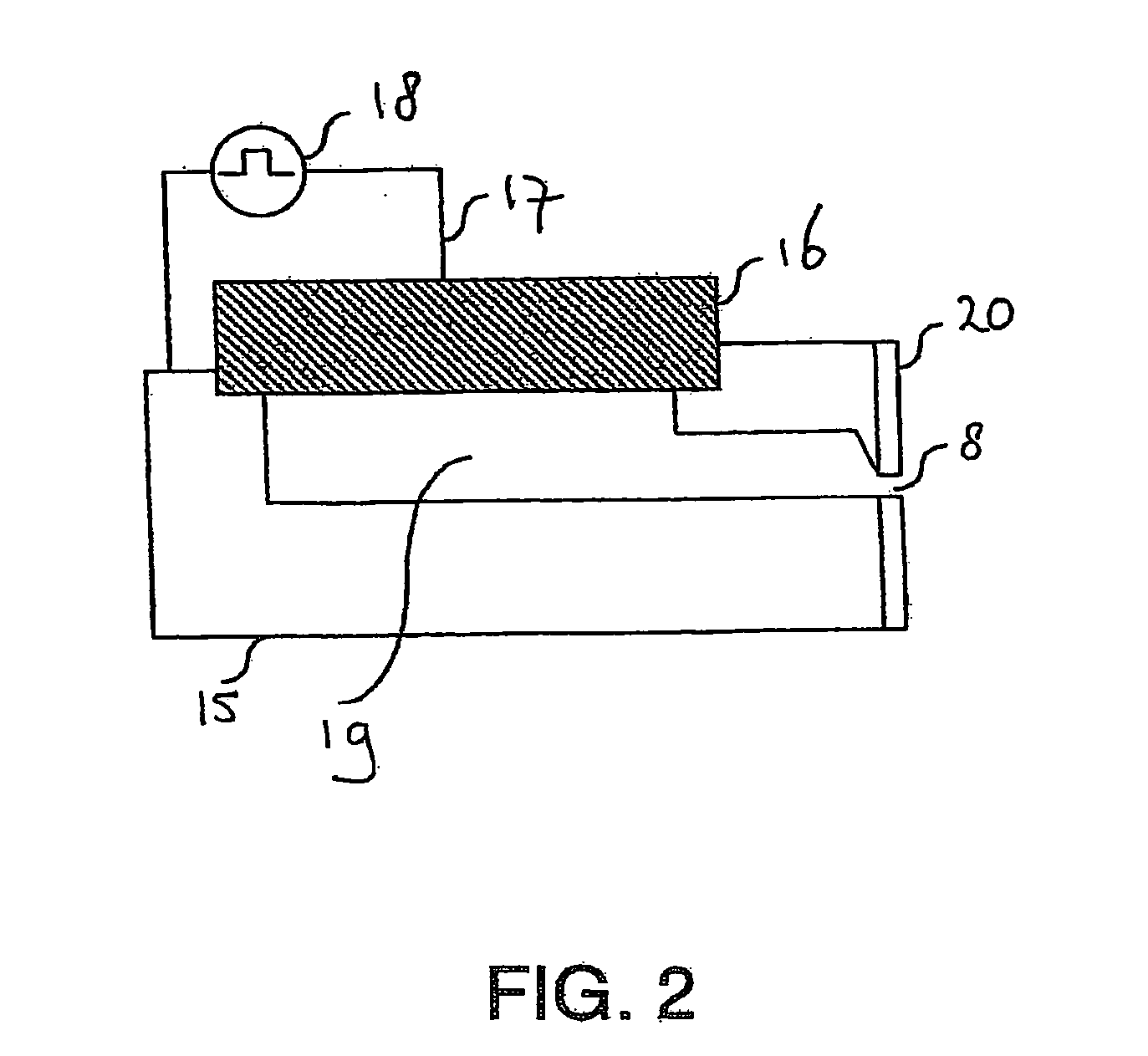[0006] The present invention is partially based on the recognition that an obstruction inside the ink chamber does not necessarily need to produce visible print artefacts. Often, the ink chamber may still be used to eject ink drops despite the presence of an obstruction, without producing visible print artefacts. Research has shown that obstructions, in particular gas bubbles inside the ink chamber, may grow the more frequently the ink chamber (or at least its associated converter) is actuated after the obstruction had initially occurred. Ultimately, a point may be reached where the obstruction is so strong that the ink chamber will fail, i.e. it will no longer be able to eject ink drops despite actuation of its associated converter. Further research has shown that the self-reinforcing effect of an obstruction can be obviated (and even prevented) by reducing the load on the ink chamber, e.g. by modifying the printing strategy in such a way that fewer ink drops are ejected from the ink chamber than originally provided for.
[0007] According to the present invention, all existing knowledge and insight is now advantageously used. When an obstruction is detected, the printing strategy is modified. The modified printing strategy is chosen in such a way that the obstruction will not grow to a size that will cause the ink chamber to fail. At a high actuation frequency of the converter, e.g., 20 kHz, a gas bubble, for example, will quickly grow to a size that will cause the chamber to fail. If previous research has shown, for example, that this gas bubble will take on a small equilibrium size at a frequency of 10 kHz, at which size the ink chamber will still be available for printing, then it will be possible to modify the printing strategy in such a way that this ink chamber will only be loaded at a maximum frequency of 10 kHz. Surprisingly, the presence of an obstruction, as long as it is sufficiently small (for the ink chamber not to fail), has such a minor effect on the drop formation process that it will not usually produce visible print artefacts. In other words, despite the presence of the obstruction in the chamber, the printing process may be continued as normal using the ink chamber. This means that the printing strategy will have been modified, for example in such a way that a smaller number of ink drops may be ejected from the nozzle per time unit. The major
advantage of this method is that the ink chamber is still available for printing without a purge operation being required. Furthermore, the modified printing strategy may be combined with another method of scanning the printhead relative to the carrier. In this way, it is still possible to provide ink drops to each pixel of the image on the carrier and no
information needs to be lost at all. The printing strategy may be modified very quickly, for example by using modifications stored in the printer memory. It will also be possible for a powerful processor to calculate a new strategy very quickly, immediately after the obstruction has been detected, and the new strategy may usually be implemented within a few seconds. This then often eliminates the need for a noticeable interruption of the printing process. The present invention allows the printing process to continue using an ink chamber in which the obstruction is present, without producing visible print artefacts. The present invention implies knowing the correlation between the obstruction present, its effect on the drop formation process, and the behaviour of this obstruction (growing and thus causing the chamber to fail, shrinking, reaching equilibrium) as a function of the printing strategy. The knowledge required to apply the present invention may be easily determined by experimentation. An example of this has been included in the further description of the invention.
[0009] According to one embodiment, the predetermined printing strategy is modified by changing the frequency at which the converter is actuated, i.e. the average number of actuations per second directed at the ejection of ink droplets. The load on the ink chamber in this embodiment is modified by modifying the way in which the converter is actuated. Research has shown that by modifying the frequency of the actuation pulses at which the converter is actuated, e.g. by lowering the amount of ink droplet ejections by 50%, it is very easy to provide a strategy that will not produce ink chamber failure. Thus it has been shown that by reducing the frequency, it is possible to prevent the gas bubble from growing larger and larger. A lower amplitude of the actuation pulse may have the same effect, but this also leads to droplets of other sizes or speed which has to be taken into account when devising an alternative print strategy.
[0010] According to another embodiment of the present invention, the printing process is automatically interrupted when it is detected that the process of printing the entire image by application of the predetermined printing strategy would produce ink chamber failure during this printing process. In this embodiment, it is first determined, before the printing process is interrupted, whether the present obstruction will actually produce ink chamber failure, if the printing process were continued using the original printing strategy. If the obstruction is, for example, a small gas bubble, and the ink chamber in question is only required to eject a few more drops of ink in order to complete the image, then this bubble will normally not grow to a size that will cause the ink chamber to fail. Interrupting the printing process and modifying the printing strategy will then not be required despite the presence of the obstruction inside the ink chamber. If, however, continuing the printing process by application of the predetermined printing strategy will produce ink chamber failure within the envisaged image, then the printing process will be interrupted and the strategy will be modified according to the present invention. The
advantage of this embodiment is that the printing process will not need to be interrupted if such action is not required to prevent ink chamber failure.
 Login to View More
Login to View More  Login to View More
Login to View More 


